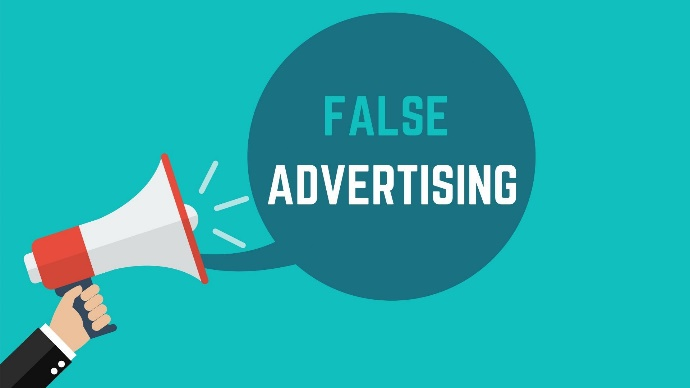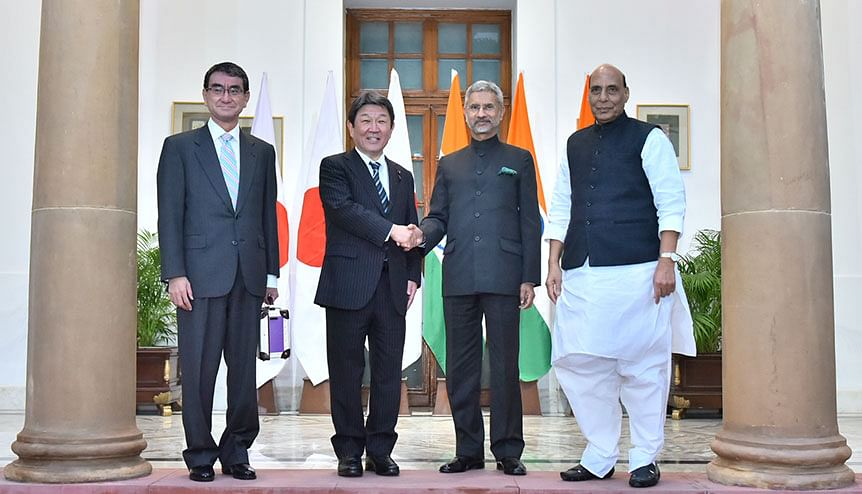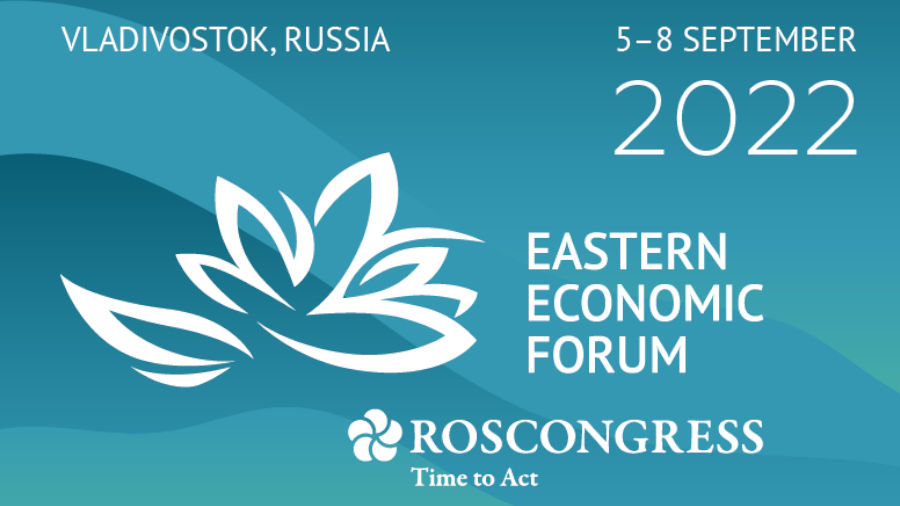AIR SPOTLIGHT
INDIAN HEALTH SECTOR

Disclaimer: Copyright infringement not intended
Context
- The National Health Policy envisages total health for all and also expects that India will raise its health expenditure to 2.5% of the GDP.
- During COVID-19, the Government of India has gone beyond its call of duty by developing public health infrastructure for indigenous development of vaccines and ensuring that every Indian citizen received the dose to save as many lives.
National Health Policy 2017
- The Union Cabinet chaired by Prime Minister Narendra Modi in its meeting in 2017, has approved the National Health Policy, 2017 (NHP, 2017). The Policy seeks to reach everyone in a comprehensive integrated way to move towards wellness. It aims at achieving universal health coverage and delivering quality health care services to all at an affordable cost.
- This Policy looks at problems and solutions holistically with the private sector as a strategic partner. It seeks to promote quality of care; the focus is on emerging diseases and investment in promotive and preventive healthcare. The policy is patient-centric and quality driven. It addresses health security and makes in India for drugs and devices.
- The main objective of the National Health Policy 2017 is to achieve the highest possible level of good health and well-being, through a preventive and promotive health care orientation in all developmental policies, and to achieve universal access to good quality health care services without anyone having to face financial hardship as a consequence.
- To provide access and financial protection at secondary and tertiary care levels, the policy proposes free drugs, free diagnostics and free emergency care services in all public hospitals.
- The Policy recommends prioritizing the role of the Government in shaping health systems in all its dimensions. The roadmap of this new policy is predicated on public spending and provisioning of a public healthcare system that is comprehensive, integrated and accessible to all.
- The policy envisages private sector collaboration for strategic purchasing, capacity building, skill development programmes, awareness generation, developing sustainable networks for the community to strengthen mental health services, and disaster management.
- The policy proposes raising public health expenditure to 2.5% of the GDP in a time-bound manner.
- The broad principles of the policy are centred on Professionalism, Integrity and Ethics, Equity, Affordability, Universality, Patient Centred & Quality of Care, Accountability and pluralism.
- The policy advocates extensive deployment of digital tools for improving the efficiency and outcome of the healthcare system and proposes the establishment of the National Digital Health Authority (NDHA) to regulate, develop and deploy digital health across the continuum of care.
One Health Concept
- COVID-19 pandemic showed the relevance of ‘One Health’ principles in the governance of infectious diseases, especially efforts to prevent and contain zoonotic diseases throughout the world.
- One Health is a collaborative, multisectoral, and transdisciplinary approach—working at the local, regional, national, and global levels—to achieve optimal health outcomes by recognizing the interconnection between people, animals, plants, and their shared environment.
- The need for One Health:
- Human populations are growing and expanding into new geographic areas. As a result, more people live in close contact with wild and domestic animals, both livestock and pets. Animals play an important role in our lives, whether for food, fibre, livelihoods, travel, sport, education, or companionship. Close contact with animals and their environments provides more opportunities for diseases to pass between animals and people.
- The earth has experienced changes in climate and land use, such as deforestation and intensive farming practices. Disruptions in environmental conditions and habitats can provide new opportunities for diseases to pass to animals.
- The movement of people, animals, and animal products has increased from international travel and trade. As a result, diseases can spread quickly across borders and around the globe.
About Integrated Disease Surveillance Program (IDSP)
- The Integrated Disease Surveillance Program (IDSP) was initiated with assistance from the World Bank, in the year 2004. The Programme continues during the 12th Plan (2012–17) under the National Health Mission with a budget of Rs. 64.04 Crore from the domestic budget only.
- The scheme aimed to strengthen disease surveillance for infectious diseases to detect and respond to outbreaks immediately.
- The Central Surveillance Unit (CSU) at the National Centre for Disease Control (NCDC), receives disease outbreak reports from the States/UTs on weekly basis.
- Its objective is to strengthen/maintain a decentralized laboratory-based IT-enabled disease surveillance system for epidemic-prone diseases to monitor disease trends and to detect and respond to outbreaks in the early rising phase through trained Rapid Response Team (RRTs).
What was India’s overall performance in response to COVID-19?
- India’s response to COVID-19 was exemplary; this disease required a multisectoral response and independent India has never given such a coordinated response to any health emergency so far.
- This pandemic demanded rapid action on different fronts and it became the main reason why India has to spend more than planned not just to ensure precautions against the disease but also for the availability and accessibility of vaccines. Although India never had an adult vaccination programme, the mortality rate in India is far lesser than compared in other developing and even developed nations.
- The resumption of festive seasons in India in 2022 is evidence that India has performed well in response to COVID-19.
The budgetary allocation for the Health Ministry has increased significantly from about Rs 47,000 crores in the 2017 budget to Rs. 83,000 crores in the 2022 budget, which is an increase of about 75%. Along with this several mission mode projects have also been implemented by the Government of India including; the Pradhan Mantri Ayushman Bharat Health Infrastructure Mission, whose objective is to improve the public health infrastructure in the wake of COVID and also ensure the response mechanism at the district level.
What was the need of adopting such mechanisms?
- The COVID-19 pandemic has made India understand the importance of care being given to patients who require intensive care i.e., preventive care. Hence, it was imperative to establish the infection disease blocks at the district level.
- In the backdrop of the Nipah outbreak, India understood the need to have One Health Surveillance for this India also has a National Institute dedicated to One Health. This will perhaps lead to required research.
- Such outbreaks make India understand the importance of virology research and diagnostic labs which will help expand the entire network in a very short period during COVID. So, the expansion network creating regional-level virology research institutions was very much anticipated by the government.
- India needs more such expansion of networks to increase the capacity to fight such infectious disease outbreaks, the climate change has increased the emergence or re-emergence of infectious diseases. Hence, the expansion of the network with an increase in spending of 2.5% of the GDP is an indication that the government has pulled health at the centre stage.
The three pillars of the Indian health structure; are Ayushman Bharat Health and Wellness Centre, Pradhan Mantri Jan Arogya Yojana and Ayushman Bharat Digital Mission. Apart from creating a public infrastructure for future pandemics, the government is also trying to put in place a Digital Health Mission. The government has also signed an MoU with National Health Authority to provide health insurance to transgender persons.
What do such developments signify?
- The Digital Health Mission will play a key role in a country like India where the internet and mobile penetration have increased dramatically and it will further increase over some time.
- Digitisation will not only ensure the wastage of resources and more correct and timely information but it will also ensure the timely actions that can be undertaken through big data analytics.
- Concerning transgender, it was longstanding to include them in the public health domain. This will be a major way ahead in achieving universal health coverage.
Prime Minister Narendra Modi while inaugurating the State-of-the-Art Amrita Hospital at Faridabad held that India did not face any kind of vaccine hesitance as other countries saw during the time of COVID. This is because of the message from the spiritual leaders and also because of the government outreach to the people.

With booster doses being available at the government health facilities what is the expected uptake by the people in India?
- The first and second dose of vaccination was not only made accessible but the government through its public outreach and awareness programme has also increased participation.
- The economic slowdown since 2020 makes people place priority on livelihood issues. Therefore, it is expected that lower levels of people participate in taking booster doses.
- However, the government should again generate awareness through its community leaders and public outreach programme as booster dose will reduce the risk by 80-90% of hospitalization and death, especially for people with co-morbidities.
What is further required to strengthen the integrated disease surveillance program?
- The need of the hour to put in force the concept of One Health which needed coordinated efforts from various domains or departments that are related to health.
- Another thing to focus on is community-based surveillance, which means the government can lay people who would be reporting the suspicious death that could not be understood by the medical practitioners.
- The above two measures will not only help detect infectious diseases but also treat such diseases.
Apart from the public health infrastructure India also needs coordinated efforts among professionals in human health (doctors, nurses, public health practitioners, epidemiologists), animal health (veterinarians, paraprofessionals, agricultural workers), environment (ecologists, wildlife experts), and other areas of expertise need to communicate, collaborate on, and coordinate activities to strengthen the Indian health sector.
https://newsonair.gov.in/Spotlight.aspx#
https://t.me/+hJqMV1O0se03Njk9
NEWS IN BRIEF: PRELIMS SPECIAL
eAwas web-portal

Disclaimer: Copyright infringement not intended
Context
- Home and Cooperation Minister Amit Shah launched the Central Armed Police Forces’ (CAPF) eAwas web portal. The Ministry said, increasing the Housing Satisfaction Ratio for CAPFs personnel is one of the priority areas of the Government.
About eAwas web-portal
- CAPF eAwas portal, which has been developed on the lines of the online allotment system of ‘General Pool Residential Accommodation (eSampada)’, will facilitate maintenance of an accurate inventory of ‘Residential Quarters/Separated Family Accommodation (SFA)’ held by CAPFs, as well as their allotment through the online process to eligible Force personnel.
- The portal also has the provision for intimation to the applicant through SMS and e-mail at various stages of the allotment process.
- The portal would also facilitate planning for the construction of new quarters based on demand-gap analysis.
- The portal has a provision that if a house of any particular Force is not allotted for any reason for a period of four months, then any Central Armed Police Force personnel can apply for the same vacant house online.
- The houses which are available for inter-Force allotment would be visible to all CAPF personnel. This provision of inter-Force allotment will result in optimum utilization of available houses and thereby increasing the Housing Satisfaction Ratio (HSR).
https://newsonair.gov.in/News?title=Home-Minister-Amit-Shah-to-launch-Central-Armed-Police-Forces%26%2339%3b-eAwas-web-portal-in-New-Delhi-tomorrow&id=446901
https://t.me/+hJqMV1O0se03Njk9
Advertisement & endorsement

Disclaimer: Copyright infringement not intended
Context
- The Ministry of Consumer Affairs, Food & Public Distribution has issued strict guidelines for the prevention of misleading advertisement and endorsement, especially in cases related to the surrogate or indirect advertisement
New guidelines
- The guidelines seek to ensure that consumers are not being fooled by unsubstantiated claims, exaggerated promises, misinformation and false claims. Such advertisements violate various rights of consumers such as the right to be informed, the right to choose and the right to be safeguarded against potentially unsafe products and services.
- The Consumer Protection Act, 2019, under which the new guidelines have been issued, already defines and prohibits misleading ads, but the guidelines get into the specifics by regulating surrogates, free claims, and bait advertisements and ads targeting children.
- The guidelines also lay out dos and don’ts for advertisers and endorsers, as well as what disclaimers in ads should contain.
- Who is covered by these guidelines?
- All advertisements regardless of form, format or medium
- A manufacturer, service provider or trader whose goods, product or service is the subject of an advertisement
- An advertising agency or endorser whose service is availed for the advertisement of goods, products or services
- Conditions for advertisements promising low prices
- the advertisement should not seek to entice consumers to purchase something without a reasonable prospect of selling the product at the price offered
- the advertiser should ensure that there is an adequate supply of the advertised product to meet foreseeable demand generated by the advertisement
- the advertisement should state the reasonable grounds under which the advertiser might not be able to supply the advertised product within a reasonable period and in reasonable quantities.
- Conditions for “free claims” advertisements
- not describe any product or service to be “free,” “without charge” or use such other terms if the consumer has to pay anything other than the cost of responding to such advertisement and collecting or paying for the delivery of the such item
- make clear the extent of commitment that a consumer should make to take advantage of a free offer
https://newsonair.gov.in/News?title=Ministry-of-Consumer-Affairs%2c-Food-%26-Public-Distribution-issues-strict-guidelines-for-prevention-of-misleading-advertisement-%26-endorsement&id=446899
https://t.me/+hJqMV1O0se03Njk9
Gastech Milan-2022

Disclaimer: Copyright infringement not intended
Context
- Union Housing and Urban Affairs Minister Hardeep Singh Puri on a three-day visit to Italy to attend Gastech Milan-2022 also met Joseph McMonigle, Secretary General of the International Energy Forum (IEF).
About Gastech Milan-2022
- As the largest exhibition of its kind supporting the gas, LNG, hydrogen and energy industry, Gastech 2022 Milan will provide space for 750 exhibitors to showcase the value that they can bring to the industry.
- Outdoor exhibition space will be available for the demonstration of lower-carbon technologies and mobility solutions. And, with 20 international pavilions, the show floor will have a truly international appeal supporting an integrated world-class business environment.
- Gastech is a global platform with the power to convene industry leaders annually in their mission to provide low-carbon, affordable energy for all.
- An important enabler of engagement between policy-makers, business leaders, disruptors and innovators, Gastech drives conversations, collaboration and connections that address key challenges and opportunities created by energy transformation.
https://newsonair.gov.in/News?title=Union-Minister-Hardeep-Singh-Puri-meets-Secretary-General-of-IEF-in-Italy%3b-discusses-different-ways-to-navigate-current-energy-crisis&id=447248
https://t.me/+hJqMV1O0se03Njk9
India-Japan 2+2 Ministerial Meeting

Disclaimer: Copyright infringement not intended
Context
- Defence Minister Rajnath Singh and External Affairs Minister Dr S. Jaishankar to pay an official visit to Japan for the second India-Japan 22 Ministerial Meeting.
- During the four-day visit, the Ministers will also hold the Defence Ministerial Meeting and Foreign Ministers’ Strategic Dialogue with their counterparts.
About 2+2 Dialogue
- The 2+2 dialogue is a format of the meeting of the foreign and defence ministers of India and its allies on strategic and security issues.
- A 2+2 ministerial dialogue enables the partners to better understand and appreciate each other’s strategic concerns and sensitivities taking into account political factors on both sides, to build a stronger, more integrated strategic relationship in a rapidly changing global environment.
- India has 2+2 dialogues with four key strategic partners: the US, Australia, Japan, and Russia. Besides Russia, the other three countries are also India’s partners in the Quad.
https://newsonair.gov.in/News?title=Defence-Minister-Rajnath-Singh%2c-EAM-S-Jaishankar-to-embark-on-4-day-visit-to-Japan-for-India-Japan-22-Ministerial-Meeting&id=447242
https://t.me/+hJqMV1O0se03Njk9
Eastern Economic Forum

Disclaimer: Copyright infringement not intended
Context
- Prime Minister Narendra Modi to deliver a video address today at the plenary session of the Eastern Economic Forum 2022 being held in Russia's Vladivostok.
- Prime Minister Modi was the Chief Guest at the EEF in 2019. The seventh Eastern Economic Forum is underway with participants from more than 60 countries.
- The theme this year is "The Path to a Multipolar World".
About Eastern Economic Forum
- Eastern Economic Forum is an international forum held each year since 2015 in Vladivostok, Russia, to encourage foreign investment in the Russian Far East.
- The Russian president and the Japanese premier have attended this forum since its beginning.
- Far East Economic Forum is sponsored by the organizing committee appointed by Roscongress, an association of the Russian Government, which also sponsors other international forums, such as the St. Petersburg International Economic Forum.
https://newsonair.gov.in/News?title=PM-Modi-to-virtually-address-plenary-session-of-Eastern-Economic-Forum-in-Vladivostok%2c-Russia&id=447237
https://t.me/+hJqMV1O0se03Njk9









